Let me preface this by saying, I’m no automotive snob. My history with cars, including a Chrysler K-car, a Ford Tempo, and even a few Lada Nivas, should attest to that. However, there was something about this 1987 Toyota Corolla that I just couldn’t connect with. I envisioned it as my dependable winter beater, but the sheer lack of excitement in every aspect of the driving experience proved to be insurmountable. A flawed car with some personality can be intriguing, but when dullness is the defining characteristic, it’s a different story.
Having previously relied on my bicycle for commuting during the warmer months, the thought of winter cycling, with potentially hazardous -40 Fahrenheit temperatures and icy roads, was less than appealing. My trusty Mazda 808 was far too precious to expose to the harsh realities of winter driving. Therefore, the need for a cheap, functional beater became apparent. With a very limited budget, practicality had to outweigh any desire for automotive passion or intrigue.
An ad for a 1987 Toyota Corolla listed at a mere $150 caught my attention. This wasn’t the sought-after rear-wheel-drive AE86 Corolla, but rather the more utilitarian front-wheel-drive AE82 sedan. To be frank, it wasn’t a car that sparked any enthusiasm, but I held onto the hope that perhaps I could develop a fondness for it, similar to my old Chrysler LeBaron. At the very least, it promised to be reliable transportation throughout the winter season. The car presented with its share of blemishes: rust, most notably on the roof and behind a front wheel, a deteriorated exhaust flex joint, and a cracked rear quarter window. A broken taillight also added to the list, but that just sounded like a good excuse for a junkyard visit. It started and drove, so after some negotiation, I managed to bring the price down to $80 and drove it home.
The drive home immediately highlighted the car’s overwhelming dullness, particularly when paired with the automatic transmission. It felt like the automatic gearbox was sapping a significant portion of the already modest engine power – a true slushbox experience. While the Corolla handled corners competently, it did so with absolutely zero driving pleasure or feedback. The overall sensation was one of utter automotive anonymity.
Typically, when acquiring a vehicle at scrap value, you expect to find an assortment of peculiar items left behind by previous owners. My Scimitar, for instance, came with a vintage radar detector and some horse whips. My Lada had a collection of basic tools and a pair of ladies’ underwear. Disappointingly, the Toyota failed to deliver any such character in its found items, containing only an empty trash bag, two bottles of window cleaner, a partial set of brake pads, and the factory tire wrench. The brake pads prompted an inspection of the front brakes, which turned out to be in decent and evenly worn condition.
The window cleaner seemed questionable for actual use on glass, and the engine bay was undeniably filthy, but…
…with some effort and paper towels, the questionable window cleaner actually transformed the engine bay from an eyesore to something reasonably presentable. The 1.6L 4A-C single overhead cam four-cylinder engine was purported to produce 90hp, but subjectively, it felt closer to 70hp (officially rated at 74 horsepower). Despite being carbureted and entangled in a web of vacuum lines, the engine ran surprisingly well.
A trip to a local junkyard led me to a 1986 Toyota Corolla sedan in considerably better condition, which would serve as a parts donor. It felt somewhat odd to be scavenging parts from a nicer car to fix up my decidedly more worn-out example. The needed window glass and taillight were in good shape and cost a total of $30. I considered taking a front fender, but it had enough rust to deter me (brown paint can conceal a multitude of sins). In hindsight, I should have grabbed the exhaust flex joint, but it wasn’t something I had considered at the time.
The salvaged parts were quickly installed on the Corolla. I also took the opportunity to weld in a piece of sheet metal to patch up the rust on the front fender (surprisingly, a rattle can of parts store paint provided a decent color match). A quick coat of leftover paint on the peeling wheel rims improved their appearance to a semi-acceptable level.
At this point, the 1987 Corolla was mechanically sound and fully functional, albeit still visually unappealing. The exhaust issue remained, but sourcing a proper replacement part proved to be surprisingly expensive. My plan was to visit a local muffler shop for a budget-friendly repair. However, it was during this phase that the realization fully dawned on me: I simply did not enjoy this car in any way. It was a cheap car, but lacked the endearing flaws that give some beaters character. I concluded that life is too short to drive something so utterly uninspiring. If I was going to endure driving a beater for the winter, it should at least be something with a personality I could appreciate. With that decision made, I sold the Corolla for a small profit and began the search for a beater with character.

 Side profile of a 1987 Toyota Corolla sedan, in slightly worn condition, as purchased for a winter beater project.
Side profile of a 1987 Toyota Corolla sedan, in slightly worn condition, as purchased for a winter beater project.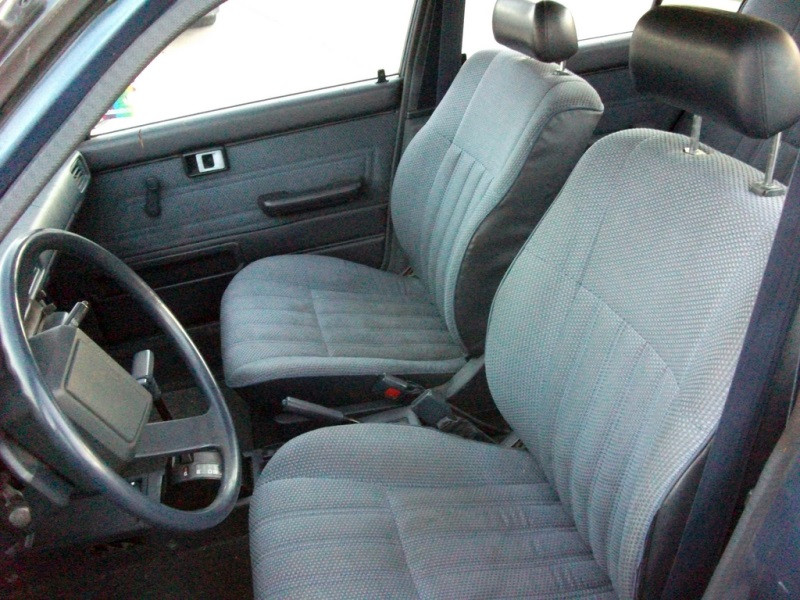 Interior view of a 1987 Toyota Corolla, showing the basic dashboard, cloth seats, and simple, functional design typical of economy cars of the era.
Interior view of a 1987 Toyota Corolla, showing the basic dashboard, cloth seats, and simple, functional design typical of economy cars of the era. Open trunk of a 1987 Toyota Corolla, revealing a surprisingly spacious cargo area for a compact sedan, highlighting its practicality.
Open trunk of a 1987 Toyota Corolla, revealing a surprisingly spacious cargo area for a compact sedan, highlighting its practicality.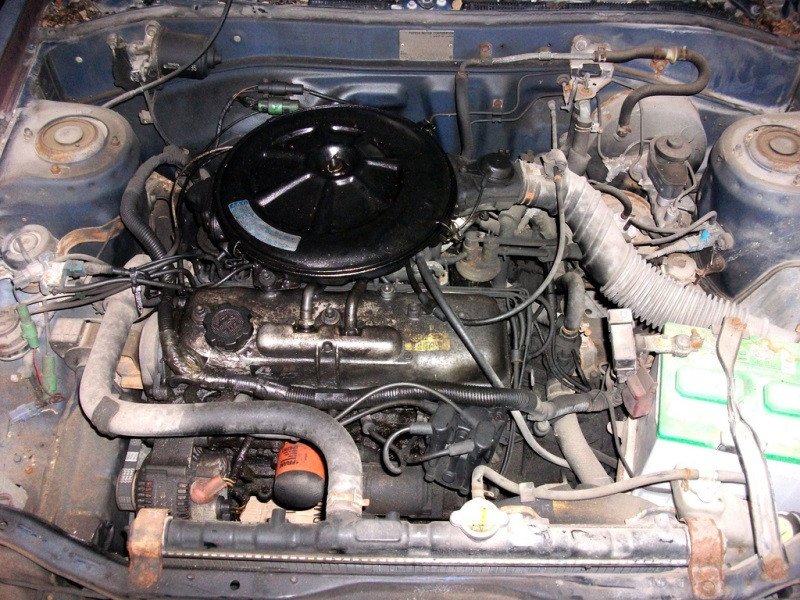 A grimy engine bay of a 1987 Toyota Corolla, showcasing the 4A-C engine in its unrestored, used condition.
A grimy engine bay of a 1987 Toyota Corolla, showcasing the 4A-C engine in its unrestored, used condition.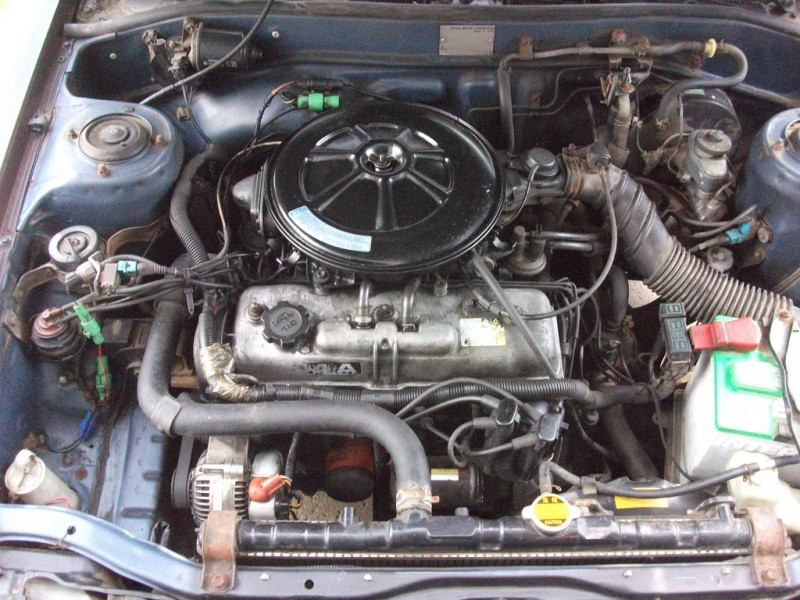 A noticeably cleaner engine bay of a 1987 Toyota Corolla after a basic cleaning, demonstrating the improvement with minimal effort.
A noticeably cleaner engine bay of a 1987 Toyota Corolla after a basic cleaning, demonstrating the improvement with minimal effort.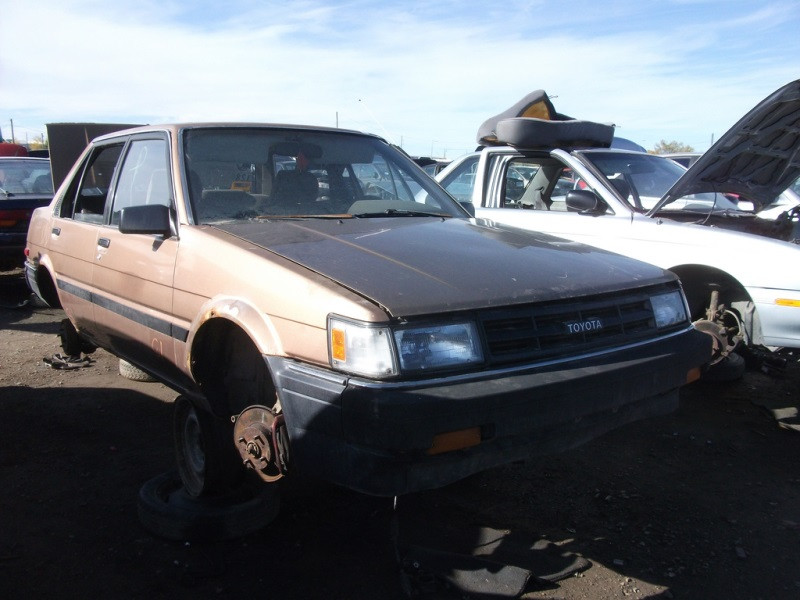 Front three-quarter view of a 1986 Toyota Corolla sedan, in better cosmetic condition, used as a parts donor for the 1987 model.
Front three-quarter view of a 1986 Toyota Corolla sedan, in better cosmetic condition, used as a parts donor for the 1987 model.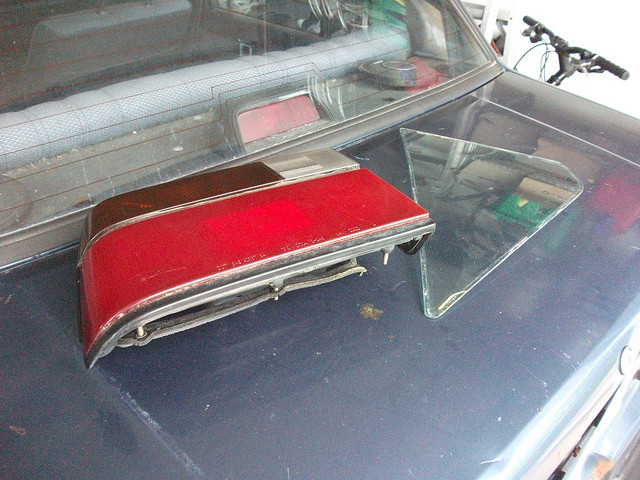 Close-up of various car parts, including a taillight and other salvaged components, ready to be installed on the 1987 Toyota Corolla.
Close-up of various car parts, including a taillight and other salvaged components, ready to be installed on the 1987 Toyota Corolla. Rear view of the partially restored 1987 Toyota Corolla, with replaced taillight and cleaned-up rear end, showing functional but still basic aesthetics.
Rear view of the partially restored 1987 Toyota Corolla, with replaced taillight and cleaned-up rear end, showing functional but still basic aesthetics.